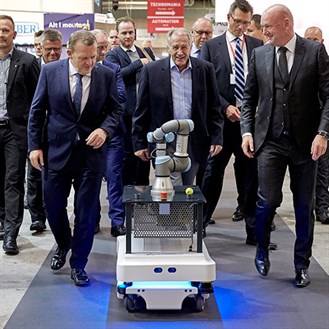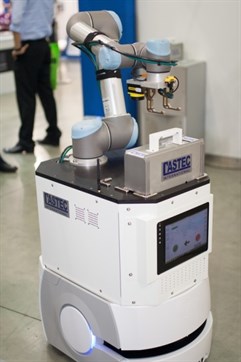-
- bimba
- Universal Robots
- dorner
- cobots
- industrial automation nj/ny
- The Knotts Company
- manufacturing
- Dorner Conveyors,
- The Knotts Co
- UR
- Robots
- PLC
- Unitronics
- automation
- humphrey products
- knotts company
- solutions
- HMI
- automation solutions
- cobot
- conveyors
- robotics
- aluminum extrusion
- aluminum extrusion in nj
- engineered solutions
- Robotiq
- air cylinder
- collaborative robots
- cost effective
- cost savings
- t-slotted extrusion
- bimba solutions
- collaborative robot
- technology
- MiR
- Humphrey
- IAI
- WAGO
- assembly
- bimba pneumatic
- machine guard
- smartflex conveyors
- solution
- 2200 Series
- cylinder
- electric cylinder
- motion control
- packaging
- pharmaceuticals
- sanitary conveyor
- Products
- automated palletizing
- automation control
- conveyor
- core competencies
- grippers
- palletizing
- resource
- robot
- AquaPruf
- Asycube
- Asyril
- Belt Conveyors
- Cage Clamp
- Food
- Machine Guarding
- Mobile Robots
- Norgren
- OptoForce
- Pneumadyne
- Pneumatic Valve
- ROBO Cylinder
- UR5
- actuators
- compressed air
- custom solution
- food safety and sanitation
- mobile industrial robot
- quality assurance
- robotics solutions
- safety
- stainless steel conveyors
- vision
- Belts
- Benefits
- Beverage
- Bimba IntelliSense®
- CT Effects
- PLC+HMI
- Proportion Air
- Proportional valve
- Questions
- Success
- UR10
- Vaccon
- automated inspection
- gripper
- improvement
- industrial vision
- intelligent actuator
- labeling application
- labor shortage
- life science
- medical
- medical industry
- pneumatic motion control
- sales process
- sensor
- thomas
- valve
- 3200 series
- 6-axis robot
- 80/20
- Acro
- Automate
- LMI
- Machine
- OnRobot
- Original Line Cylinder
- Pinch Valve
- Precision Technology
- Predictive Maintenance
- Preventive Maintenance
- Product News
- ROBO Cylinders
- ROI
- Reducing Costs
- automated mobile robot
- autonomous mobile robot
- connectors
- controls
- covid
- custom solutions
- customer service
- e-Series
- electric actuator
- electro-mechanical
- end of arm tools
- energy plant
- ethercat
- external resource
- flexmove technology
- guarding
- inspection
- machine control
- manufacturers
- monitoring
- motion
- new product
- outsource
- outsourcing
- packing
- pneumatic actuator
- pneumatic valves
- precision move
- quick response solution
- regulator
- sales tools
- steel frame
- vacuum
- vacuum technology
- welded steel frame
- 7X Series Conveyor
- AMR
- Advantages
- Application
- Applied Motion Products
- Asycube 530
- Asyfeed Pocket
- Balanced Valves
- CNC program
- Continuity Inspection Tool
- Control Panel
- Controllers
- Crowned Pulley
- F22 Series
- Factory Improved Productivity
- Filtration
- Fire Fighting
- Flexible Feed
- Freeze protection
- Gas
- High Pressure Regulator
- IP65
- Inspekto
- IntelliPress
- Intellisense
- International Manufacturing Technology Show 2016
- LARGO A5
- Legos
- MIRAI
- Machine Controllers
- Machine Vision
- Micropsi
- NJ
- NY
- New
- New Scale Robotics
- OEE
- Oil
- Optimization
- PACK EXPO
- PC10
- Parison Blow Molding
- Pick-it
- ProControl Series
- ROEQ
- Rain Test
- Resin Block
- Rio Olympics
- SCHUNK
- Sanitation
- Sensors
- Smart Manufacturing
- Spot Welding
- TRD
- Temperature Controller
- Training
- Trio Manufacturing Technology
- Twist Clamp
- UR3
- UniStream
- Universal
- V-guide
- Valve Assemble
- Vane-Buster
- Versagrip
- Versagrip solenoid pinch valves
- Victory Actuator
- Vision430
- XTR Series
- Yamaha
- balanced solenoid valve series
- bimba electric
- bottle filling
- brewery
- brushless motor
- buna
- center point
- chicane
- cloud
- cobot compliance
- collaborative operation
- compact series
- composite cylinder
- conference
- cost
- date code
- demonstration
- desiccant drier
Get the latest in your inbox.
This post is brought to you by Universal Robots.
The collaborative robot (cobot) market is booming with more and more businesses looking to improve productivity, efficiency and drive business growth. With cobots you can automate most tasks but when you add some wheels and pair a UR cobot with a mobile robot, the possibilities are endless.
Danish company Mobile Industrial Robots (MiR) specializes in automating internal transport and logistics solutions and they currently work with Universal Robots to create effective applications and solutions for business. Their MiR100 is designed to optimize workflows, improve productivity and reduce costs.

The MiR100 and our UR3 took centre stage last year when MiR was presented with the coveted DIRA Automation Award at the tradeshow hi-2015 by the Danish Prime Minister, Lars Løkke Rasmussen. Here the Prime Minister is taking a walk with the MiR100 our UR3.
CEO of MiR, Thomas Visti said there are many benefits available to companies that adopt this type of mobile technology. The combination of the MiR100 and the cobot optimizes production and allows teams and robots to work together.
‘Instead of having a robot arm that’s fixed to one position, manufacturers can now integrate a MiR100 with a Universal Robots’ arm, which can move across the production floor. A great option for pick and place applications.
‘Mobile robots significantly increase productivity because employees aren’t taking time out of their day to move parts around the factory floor. Instead, the parts can be moved by mobile robots which is more efficient. With a combination like this, employees can spend their time focusing on higher value tasks within the business.
‘We’re seeing this collaboration predominantly being used in the manufacturing industry, however, there’s potential for it to be used across a broad range of industries in the future. Supermarkets for example would benefit greatly from this type of technology to move products around the store and to help restock shelves.
‘The MiR100 and the cobots support each other well, they’re easy to use, set up and they use the same batteries. The flexibility, low cost and fast return on investment makes this type of automation very appealing to business owners’, Visti said.
Taiwan’s largest solar energy automation equipment manufacturer, CASTEC International Corp has developed i-Operator, a robot also integrated with Universal Robots UR5 and UR10 robotic arms.

The i-Operator is a cobot with a computer-integrated manufacturing (CIM) system that’s capable of automated loading and unloading material feeding.
The i-Operator uses a scanned map of particular routes on a factory floor that are coded into the robot by an engineer. The robot can freely move around the factory floor, avoiding obstacles and it has the ability to reroute its path. This prevents interruptions from occurring in the production process and reduces loss in production capacity. This particular technology can work 16 hours a day and uses wireless communication and software control to enhance the accuracy of loading and unloading of materials. Every action performed by the i-Operator is checked by the CIM system to ensure accuracy and productivity.
General Manager of CASTEC, Abel Lo said safety was a key factor in establishing a strong business relationship with Universal Robots.
‘Safety was one of the key factors we took into consideration during the designing of the i-Operator. i-Operator will have to move between employees and perform loading and unloading operations at various workstations in the factory. With the gradual maturing of automated navigation technology, mobile robots are now capable of recognizing and avoiding obstacles and updating the best routes in real-time. Meanwhile, the attached robotic arms must be able to place the materials or products precisely on the correct location. Since loading and unloading operations may be performed at close proximity to other employees around the work station, the safety of the robotic arms is of utmost importance; this is also one of the characteristics offered by the UR robots’, Lo said.
Many semiconductor manufacturers have spent a large amount of time and effort sourcing solutions that can mitigate the labor-intensive material loading and unloading process. The i-Operator is especially designed for semiconductor and LED industries and has been deployed by some Taiwanese manufacturers within their workplaces. These manufacturers have recognized the i-Operator for its effectiveness and influence within the industry.
CASTEC believe the i-Operator can also be deployed in hospitals, restaurants and hotels in the future and look after tasks like the handling of medical waste. While staff have always handled this type of process, it’s nevertheless a process that poses considerable risk. However with i-Operator, not only would it relieve busy hospital staff of this mundane task, it will also reduce occupational hazards and risks.
Interested in an Universal Robot?
Interested in Learning More?
Please fill out our contact form, and a member of the Knotts Team will get in touch to help you.
%202.png?width=323&height=215&name=PH_VA_VR_Series_Technical_Support%20(1)%202.png)



